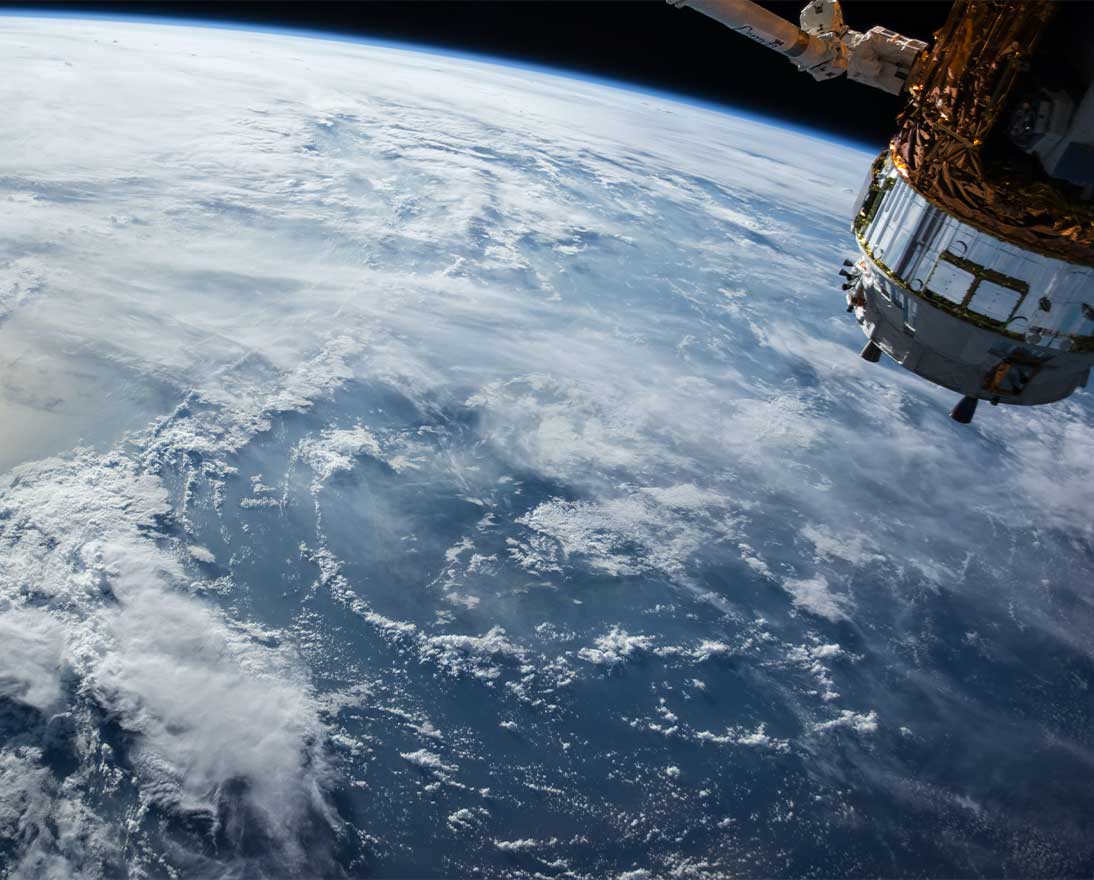What is space weather and how does it affect us down on Earth?
RiskArticleJanuary 13, 2023
As we increase our reliance on satellites, space weather has the potential to cause mass disruption on Earth. How can we prepare for solar winds, geomagnetic storms and other space phenomena?
Space has never been more important to us down on Earth.
Around 11,000 satellites have been launched since Sputnik 1 in 1957, and as many as 70,000 more could be put into orbit over the coming decades. This space infrastructure supports many vital systems such as broadband, GPS services, climate monitoring, financial transactions, timing and crucial military technologies. But as we move more critical infrastructure into space, we are exposing it to the risks of space weather.
The primary source of space weather is the Sun. Despite being 93 million miles (150 million km) away, it can have a profound impact on Earth. This space weather relates to the magnetic fields, radiation, particles and matter that are ejected from the Sun. They interact with Earth’s upper atmosphere and surrounding magnetic field to produce a variety of effects. The most recognizable space weather effect is the auroras (the northern and southern lights).
Is space weather dangerous?
But space weather can cause extensive damage – particularly solar winds and geomagnetic storms (see boxes below). For instance, in February 2022 SpaceX – owned by billionaire Elon Musk – lost 40 satellites after they were hit by a geomagnetic storm a day after launch, causing them to fall from orbit and burn up.
Satellites can also suffer from significant drag because of solar activity. This is due to the effect celestial particles have on the density and temperature of our atmosphere. After a solar storm, the North American Aerospace Defense Command (NORAD) must re-adjust the trajectories and orbits of hundreds of objects to avoid collisions.
Down on the ground, Earth’s magnetic field offers us protection from space weather. But with the potential to impact thousands of vital satellites in orbit, space weather can cause severe disruption to our day-to-day lives.
For instance, a geomagnetic storm that hit Earth in March 1989 – the biggest in the 20th century – caused major disturbance. Satellite operations were crippled, several objects were temporarily “lost” in orbit, while NASA’s Solar Maximum Mission spacecraft “dropped as if it hit a brick wall” because of increased drag. This caused a complete power blackout in Quebec, Canada, and hindered electricity transmission in the U.S., the UK and Sweden.
What impact can space weather have on society?
The socioeconomic impact of similar geomagnetic storms is difficult to estimate with precision. Some reports state damage could be contained and repaired relatively easily, while others predict a doomsday scenario of worldwide power outages lasting weeks or even months. It’s for this reason that the UK added the risk of “severe space weather” as a medium-to-high-likelihood scenario to its National Risk Assessment in 2011.
On a practical level, it isn’t hard to imagine that a GPS disruption of even a few microseconds could cause a cascade of failures in electrical grids, phone networks, stock markets, healthcare, air travel and other systems all at once. This is already a central consideration of anti-terrorism strategies, so it is no surprise that in 2016 President Obama issued an Executive Order to prepare key U.S. infrastructure for extreme space weather. This includes setting up reliable backup networks and enhancing monitoring capabilities. Many countries have since followed suit.
Space weather’s impact on climate change
There is also a concern that space weather – with its fluctuating density and temperatures in the atmosphere – could have a long-term impact on Earth’s weather. Combustion emissions from rocket engines are already having an effect on our climate.
Solid rocket engines not only eject dangerous substances like chlorine directly into the ozone layer, they also release particles into the atmosphere that interact with solar energy and change the flow of radiation – heating the stratosphere, cooling the surface and depleting the atmosphere.
As the space industry continues to grow with ambitious plans, it is important to acknowledge we are making ourselves not just vulnerable to space weather but to on-Earth weather changes as well. Continuing to build on this booming industry without appropriate regulation or supervision could potentially result in irreversible damage to our climate.
Assessing and managing the risks
The most intense geomagnetic storms in recorded history occurred in 1859 and are known as the Carrington Event. It created auroral displays observed across the globe and caused telegraph systems to spark and catch fire in Europe and North America. But we should not assume this will be a one-off event.
Carbon 14 isotope data from tree rings indicate that a “Carrington Event” also occurred in 774 BC and that similar sized events happen every several millennia. Smaller events such as the 1989 geomagnetic storm that caused the power outages in Quebec, also happened in 1921 and 1960.
A Carrington-class strength storm did erupt from the Sun in 2012, but fortunately narrowly missed Earth. After that event, researchers from Lloyd’s of London and the Atmospheric and Environmental Research agency estimated that a Carrington-class event impacting Earth today would cause damages totaling USD 0.6 -2.6 trillion to the U.S. alone and cause widespread – if not global – electrical disruptions, blackouts and damages to electrical grids.
The impacts could be long-lasting and power restoration estimates range anywhere from a week to the least affected areas to more than a year to the hardest-hit regions. Television signals from satellites would be disrupted significantly, and satellites, too, would experience disruptions to radio frequency communication, crippling GPS navigation.
A deep understanding of space and the forces that shape it will be needed to effectively predict the events that could critically wound our vital tech systems. In parallel with forecasting, there is the route of infrastructure ‘hardening’ – an expensive and laborious process.
Both routes will require significant investment to ensure computer models, protocols and skilled staff are on hand to predict and react to space weather. Thorough risk assessments will need to be conducted to identify vulnerabilities and prepare appropriately. But it increasingly seems like a wise investment.
What is a geomagnetic storm?
A geomagnetic storm is a major temporary disturbance of Earth’s magnetosphere caused by a strong surge of solar wind called a coronal mass ejection. This generates electric currents in the near-Earth space environment.
What is the solar wind?
The solar wind is a continuous stream of charged particles emitted by the Sun. It is deflected by Earth’s magnetic shield, causing most of the solar wind’s particles to flow around the planet. The solar wind is visible in the halo around the Sun during an eclipse and sometimes when the particles hit Earth’s atmosphere – as the aurora borealis (northern lights) or aurora australis (southern lights).



